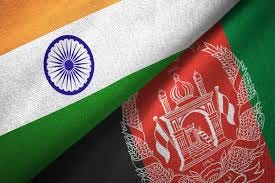Taliban's Economic Impact
In today's article, we talk about the economic implications of the Taliban takeover on both the country itself and India.
Hi 👋🏻, Welcome to
Rise and Shine☀ - Sunday Special
Every Sunday, an email will arrive in your inbox detailing a specific topic to help you understand it better.
Sign up below for free 👇🏻
The Economic Impact of the Taliban Takeover
It's not rocket science. Taliban's return to power has brought fresh issues to an already impoverished country. Afghanistan's economy has been mostly supported by US aid for the previous two decades. And, despite all of the negative news the US has received this week, you could argue that Afghanistan has made some progress. Life expectancy has increased from 56 to 65 years, Internet usage has increased from 0% to over 11.5%, and primary school enrollment has increased from 21% to 104%.
Yes, 104%. That’s not to say that the program was ultra-successful. It just so happens that a substantial number of overage children were enrolled in each grade because of repetition or late entry. Nonetheless, it’s a sober reminder that many people were finally getting a proper education. However as the clouds of uncertainty engulf the nation, its future economic prospects look bleak. Afghanistan still remains one of the poorest countries in the world. 90% of the country’s population lives on less than $2 a day, and its GDP in 2020 was just under $20 billion.
And, with the Taliban in charge, it's difficult to believe that the country will find methods to grow economically.
Is this the end of the road for the country?
Obviously not. The country still has a lot of potential. According to one report in The Diplomat, “Afghanistan may hold 60 million metric tons of copper, 2.2 billion tons of iron ore, 1.4 million tons of rare earth elements (REEs) such as lanthanum, cerium, neodymium, and veins of aluminium, gold, silver, zinc, mercury, and lithium.”
Having said that, the potential can only be realized if the administration is prepared to invest in the future of the country. They would need to be ambitious in order to monetize these assets. Some argue that the Taliban's tight connection with China may aid on this issue. However, even if they discovered a method to profit from these rich mineral riches, you must allow this income to flow down to the people of Afghanistan, and at this point, you can see the inherent difficulty in having someone like the Taliban at the helm.
Then there's the issue of human capital. Afghanistan is a young country, with two-thirds of the population under 25. And, as literacy rates have increased in recent years, they have become a fairly educated population, with many women joining the fold as well. However, as the Taliban asserts its control, this development may be jeopardized once more.
Finally, we have to talk about the economic impact on India.
While India trades with Afghanistan, the total value of exports and imports is barely around $1.5 billion. We import dried fruits and nuts from Afghanistan and export tea, cotton, and pepper. And, given that the Taliban has been attempting to seize control of the Afghan government for some time, it's not surprising that trade hasn't been booming. In all likelihood, the prices of raisins and almonds will rise in the near future. But it's not exactly alarming.
What is arguably more worrying are the long-term consequences of the Taliban control. We have no idea how India will react. Will we engage the Taliban directly and maintain supply chains? Will we use backchannels to continue trading with the country, or will we gradually wean ourselves off all ties?
The last option is unlikely to materialize, but who knows — considering the speed at which the geo-political realities of the Afghan state have fundamentally changed over the past few months, you could argue that anything is possible.
So, the Taliban takeover isn't exactly good news for the Afghan people or India, and hopefully, now you know why.
Hit 💜, if you enjoyed the article.
Don't forget to share this article.



